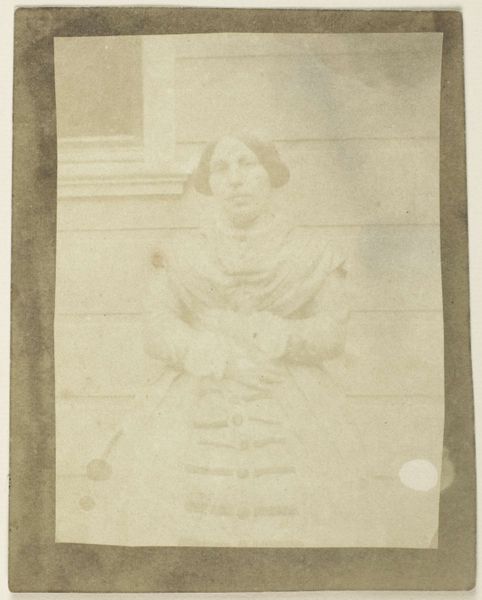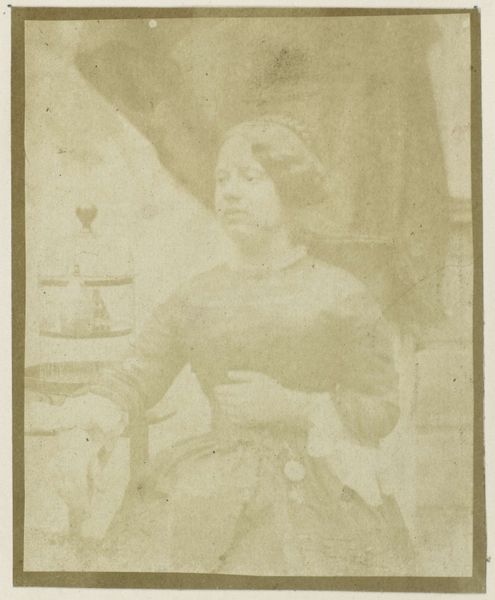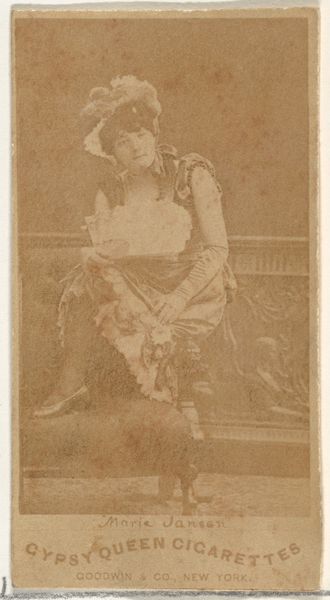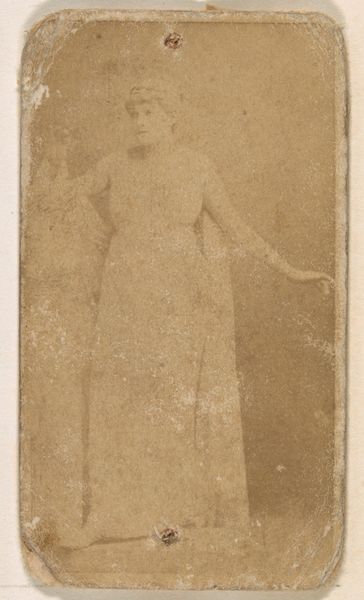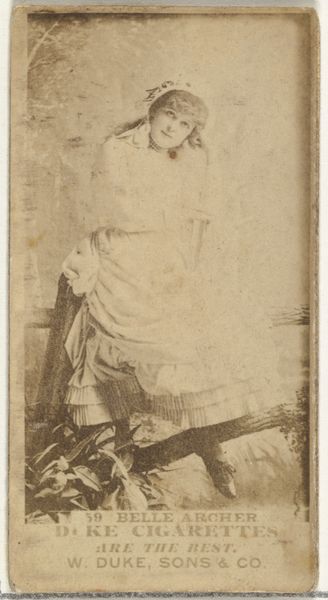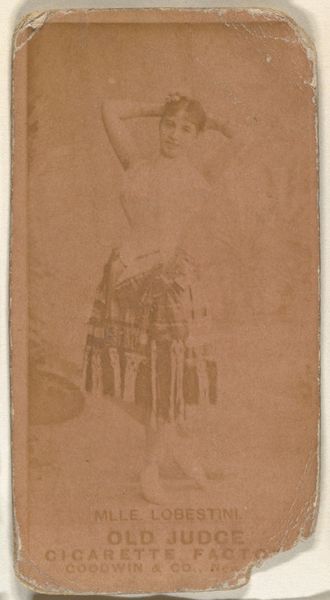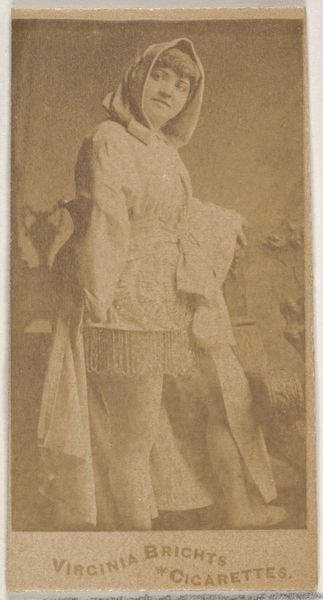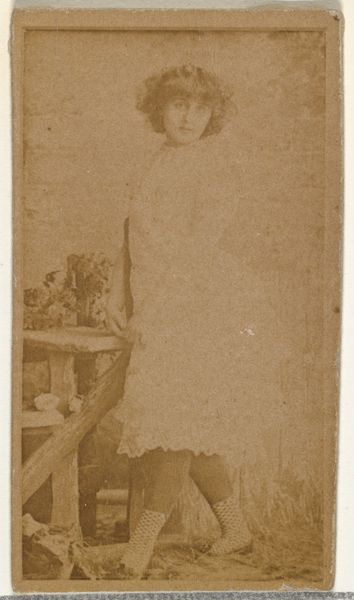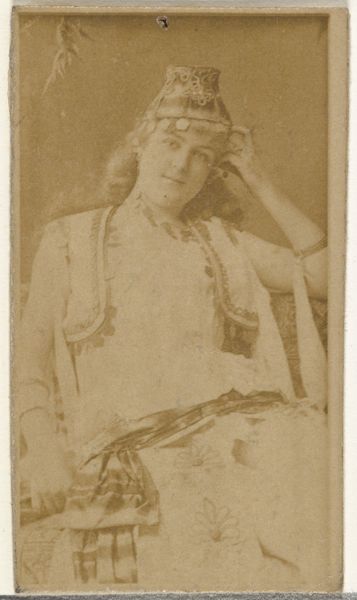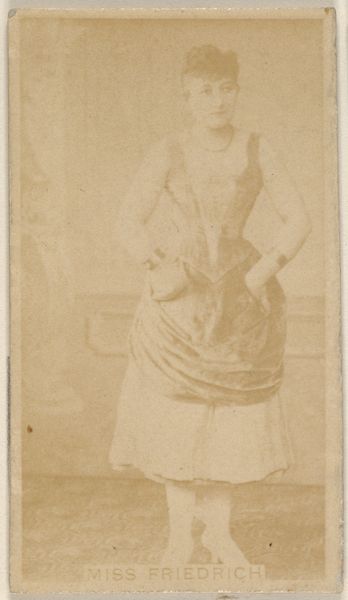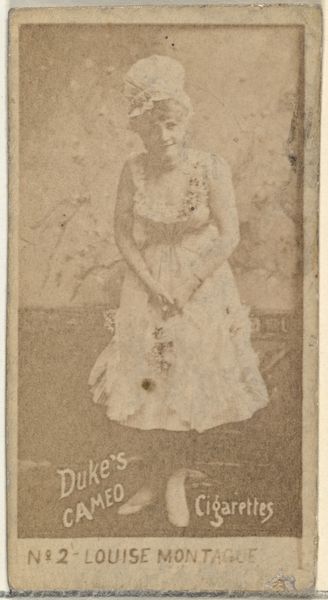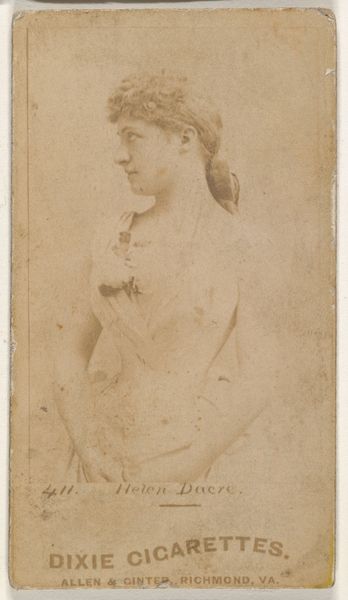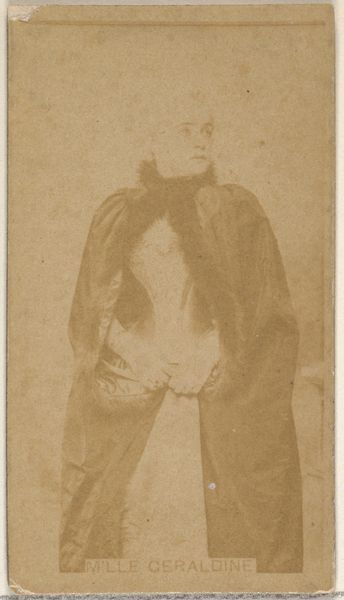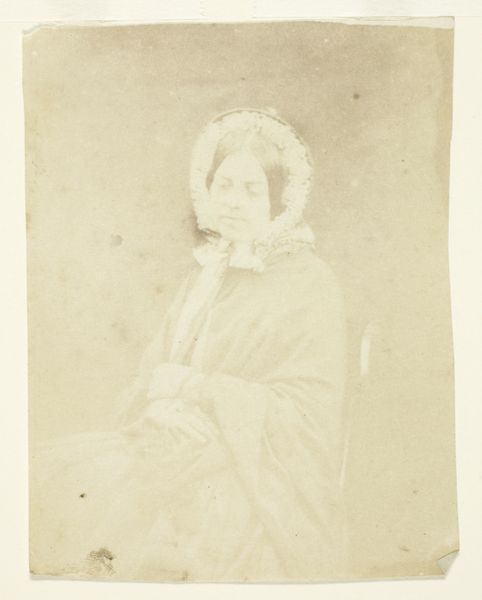
photography
#
portrait
#
photography
Dimensions: height 138 mm, width 77 mm
Copyright: Rijks Museum: Open Domain
Editor: This is a portrait of Caroline Asser, taken in 1850 by Eduard Isaac Asser, captured through photography. It has this really muted, almost dreamlike quality because of the faded sepia tones. What catches your eye when you look at this piece? Curator: The soft, almost ethereal quality created by the early photographic process invites contemplation on the subject's inner world. Consider the closed posture, the downturned gaze, perhaps reflecting the societal constraints placed upon women of that era. Does she appear melancholy or simply contemplative? Editor: That’s interesting. I initially saw it as maybe just a standard portrait of the time, but your reading brings out a possible deeper meaning about the societal expectations on women. Is there a typical style in the 1850s in relation to portraying a person? Curator: Portraits were carefully constructed symbols of status and character. While photography aimed for realism, poses and settings were meticulously chosen to project desired virtues. Are there any details here, in her dress or setting, that strike you as particularly significant or that defy conventions? Editor: Well, it is so faded. I am not sure what to make of it in that way. Maybe she wanted to show her status? Curator: Perhaps. Now I'm pondering: if color was included, would we still arrive at the same perception? If so, is the true quality of the photo truly upheld? Editor: That's a lot to unpack! I've definitely learned to look beyond the surface, consider historical and societal influences. Thanks for pointing all of that out! Curator: And I, in turn, appreciate the chance to reconsider what seemed so simple through fresh eyes. It's these dialogues across time and perspectives that breathe new life into even the oldest images.
Comments
No comments
Be the first to comment and join the conversation on the ultimate creative platform.
